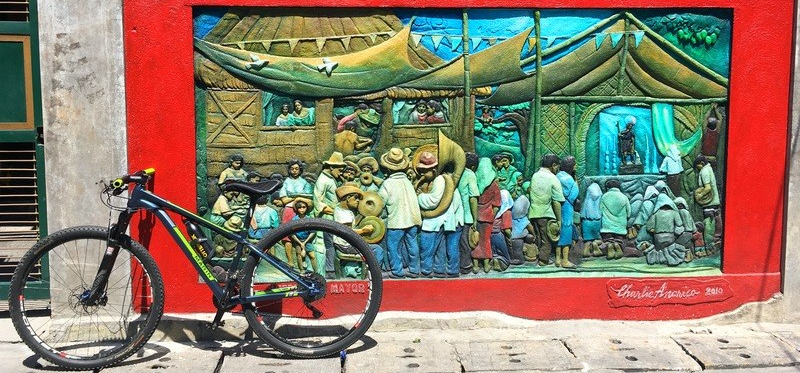
ANGONO | HISTORY
Known as the Arts Capital of the Philippines, Angono is home to National Artist for the Visual Arts Carlos “Botong” Francisco, who was one of the first homegrown artists to make his own versions of higantes.
We rode a jeepney to Binangonan and it took us almost an hour until the driver dropped us in Balaw-Balaw. Though we don’t have any idea where we are, I recognized the statue that was in front of me. I remembered that it was the same sculpture that I saw on the internet. I took a picture of it and my companion says that, there have been a lot of changes since he last visited Angono. Some places were abolished because of the road widening while some remained the same.
Angono is notable to many as the Art Capital of the Philippines. It lies between Laguna Lake and along the foot-hills of Sierra Madre. It covers 26.22 km2 (10.1 sq mi) and 30 km east of Manila.
In fact, Angono is the first district of Rizal. It is a dandy municipality in which the municipal hall, plaza, church, markets and the barangays were bound closely. It is like during the Spanish era that the church was the kilometre-zero. As a matter of fact, it is composed of ten (10) Barangays namely, Bagumbayan, Kalayaan, Mahabang Parang, Poblacion Ibaba, Poblacion Itaas, San Isidro, Santo Nino, San Pedro, San Roque and San Vicente.
Its original aborigines are mainly Tagalogs, while the Minority ethnic groups were Ilocanos, Bicolanos, Kapampangans, Pangasinenses and Cebuanos. Hence, the lingua de franca of Angono is Tagalog.
Furthermore, it is notable as the Art Village of our country, for it is the hometown of the two National artists –Carlo “Botong” V. Francisco and Maestro Lucio D. San Pedro, which also includes some of the actors and actresses in the showbiz industry. It is also famous, for its prehistoric artworks called Petroglyphs.
Moreover, art galleries and family museums specifically Blanco Family Museum and Nemiranda Art Gallery may also be the reason why Angono became the Art Capital of the Philippines. Besides, it is where most of the artists originated from. From an exemplary work of an ancestor, it was passed from generation to generation until today.
In addition, Angono is known for its scrumptious exotic cuisine and fried itik. Restaurants like Balaw-Balaw offers mouth-watering and delicious recipes. On the other hand, different delicacies and snacks can be bought in Angono’s public market.
Likewise, Angono is renowned for its religious celebrations. One of this is the Higantes Festival or Feast of San Clemente which is celebrated on the 23rd of November, in honor of the patron saint of fishermen and gives prominence to a fluvial procession in Laguna Lake. Nevertheless, gigantic papier mâchés can also be seen during the parade. Next is the Carabao Festival held on May 15 in honor of San Isidro Labrador, whereas carabaos were pulled in carts and ornamented with flowers and bunting. Others are traditional practices during the Holy Week - the Cenaculo (Passion Play), Santo Entierro (Good Friday) and Salubong.
This article was written by Shane Valerie G. Pastoral.